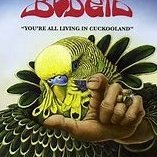High Yield Agricultural Business
-
Recently Browsing 0 members
- No registered users viewing this page.
Announcements
-
Topics
-
-
Popular Contributors
-
-
Latest posts...
-
219
‘Putin clearly won’: Pundits say meeting was ‘bad for Americans’
Serious negotiations with with the wanted war criminal will now move to Moscow🤔 -
118
Opinion Thailand's Visa Shake-Up Threatens Retiree Paradise
Hmmmm. so my 2021 Hyundai, two motorcycles and Vietnamese Drivers license in my name are a figment of my imagination?? Where do you get your information?? Unlike Thailand, foreigners can own property in Vietnam if they are building a house on it, albeit a very small plot - and it’s not an easy task, but possible, also you can lease property for 50 years in Vietnam vice 30 in Thailand. The downside is Vietnam has no visa or extension of stay for retirees, drastically reduced during Covid and not recovered - YET.. -
32
Police and immigration cars at 2 a.m.
Fair point....just taken me five minutes of constant back and forth to convince ChatGPT that Rishi Sunak is not PM. For "current affairs", in particular, the AI databases tend to be way out of sink -
14
Ukraine Russia Prepares Nuke Missile Tests Amid Trump's Warning
True and those bases, airports, housing facilities are amazing......a huge task.....but having said that the UK did drawdown from Germany, which I thought was a huge mistake and wouldn't happen.......I was one of the last people there, other than a small military group that were retained in Sennelager. -
8
NES English teacher in Thailand
Yes and no. Many schools these days try to pay the absolute minimum. Which usually. means employing non-native speakers. I would say overall, they dominate the teaching market, outside of the better private and international schoolsm, who mostly employ qualified native speakers, regardless of ethnicity. Definitely a good idea is to return home, do your teaching qualification, get homeland teaching experience, then look for a position in an international school. For the best schools, its highly desirable to have home country teaching experience (not just a pgce, though this is still reguired). -
194
Report Stranded Aussie Pensioner Pleads for Return Home
Humanity. Never heard of the Good Samaritan.
-
-
Popular in The Pub

.thumb.jpg.d9f3e54432a0ae65f4d5beb0d2d122ce.jpg)









Recommended Posts
Create an account or sign in to comment
You need to be a member in order to leave a comment
Create an account
Sign up for a new account in our community. It's easy!
Register a new accountSign in
Already have an account? Sign in here.
Sign In Now